During the same foray that produced the Eckford Street photos in April 2011, I was really there for a quick trip the length of Union Avenue. The avenue runs from the junction of Marcy and Flushing Avenue north to Driggs Avenue in McCarren Park, and if you look at the map, it forms the boundary of two street layouts dividing the easterly section of Williamsburg from the westerly, with the numbered “north” and “south” streets ending here and the ‘named’ streets of the East Willie beginning their runs east here. Such street layout junctions usually make for oddly shaped building plots, leftover signage, and odd little triangles and vistas, and Union Avenue doesn’t disappoint in that regard. Union Avenue has a “new” section between Flushing and Broadway that was cut through in the 1930s when the IND Crosstown Line, over which Union Avenue runs, was built. Union Avenue also has a little-remembered northern section above McCarren Park that was renamed Manhattan Avenue over a century ago.
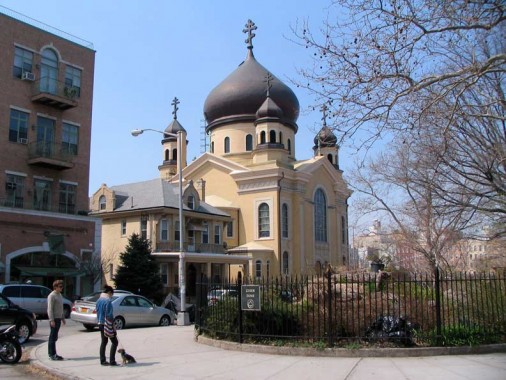
If it’s attention you want, you can do worse than surround your building with domes, and that’s exactly what Louis Allmendinger did in the mid-19 teens when he was designing the Russian Orthodox Cathedral of the Transfiguration at Driggs Avenue and North 12th, seen here in an angle I hadn’t previously suspected from Union Avenue. The church has five onion domes, four arranged around the central dome in a Greek cross. The church claims it to be the one and only representative of Byzantine Revival architecture in New York (though there are other onion domes scattered around town). The church offers services in English and Slavonic. Allmendinger, a prolific and all-purpose architect, also designed the utiltarian last edition of the Gustave Mathews Flats on Grand Avenue on the Maspeth-Elmhurst border.

If you haven’t noticed already I am beginning at McCarren Park and working my way south on Union Avenue. The Willieburg prides itself on offering items far afield from the usual chain store fare found in the Targets and Wal-Marts of the world, such as the Urban Rustic grocery, which, I’d imagine, sells locally-produced goods (i.e. comestibles grown within a few miles of NYC). And, checking their website, I found I had made a good guess.

The Parks Department has named the wedge formed by Union Avenue and N. 12th the “Green Dome” in honor of the dome-dominated Orthodox church, but whenever I see those two words together I think of Number Two’s lair in The Prisoner. Come to think of it, much of The Willieburg increasingly resembles The Village to me.
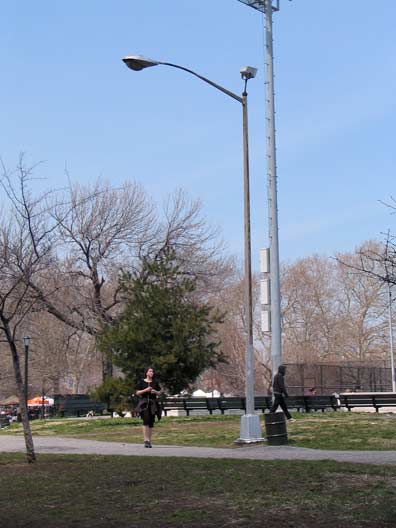

Though the city has relentlessly stepped up its old luminaire replacement program since 2005, removing nearly every old lamp remaining (except the ones with landmark protection) this General Electric M400, 1958-1960 vintage, appears to have slipped through the cracks. You will find it walking along Bayard Street toward Union. It lacks a photocell and probably takes power from an underground conduit.

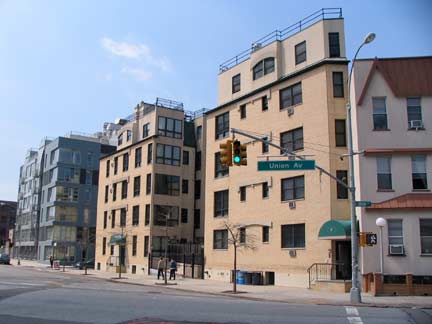
Bayard top) and Roebling (bottom) Streets both have their beginnings, or ends, at Union Avenue, and buildings that the Politburo of the old Soviet Union would be proud. Modern amenities like wifi and Wii, or whatever people do now for entertainment instead of read, might be inside, but new residential construction seems to be a race to the drabbest.
The New Williamsburg and the Old Williamsburg are battling at North 10th, Union Avenue and Frost Street, where an auto collision repair place with EVergreen phone number, a view of a Roebling Street brick warehouse, a 1910s-vintage fire alarm with the urban detritus of the present, and a brand new condo project, plopped into what the developers hope will be a hip, hep, hip-hop and happening part of town eventually.


Withers Street makes a brief foray west of Union Avenue, only to be stopped cold at the junction of North 9th and Havemeyer Streets. On the corner of Union is the Catholic Academy of Our Lady of Mount Carmel School. The church of the same name, at Havemeyer and North 8th, is the focal point of Williamsburg in July of every year, as the Feast of Lilies, or Festa de Gigli, honors St. Paulinus of Nola when a 100-foot tall statue weighing three tons is carried by dozens of men on a platform complete with a band and singer through the streets of North Williamsburg.
Withers Street honors a 19th Century ferry operator, banker and tradesman named Reuben Withers, but whenever I hear the name, I think of Jane Withers, who played Josephine, the lady plumber on 1960s and 1970s Comet commercials. Even now, professional female plumbers are hard to find.
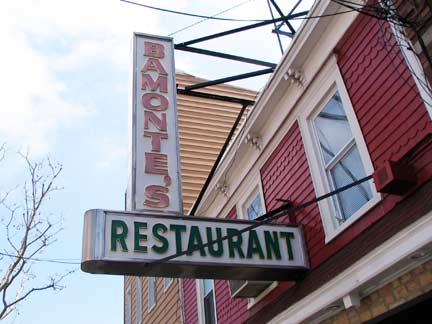

Getting back on topic, Bamonte’s is an Italian restaurant located on the ground floor of a private home on Withers East of Union. The signage of course is in red, white and green of the Italian flag. The restaurant has been in business since the turn of the century — from the 19th to the 20th.
Bamonte’s attracts an unusual mix of customers: Some have been kicking around the place since the 1950s (as have the waiters), and others are drawn from Williamsburg’s now-thriving artists-and-yuppies community. You don’t need an archaeologist to identify the strata of renovations, from original chandeliers to mid-century paneling to a modern glassed-in kitchen. NY Magazine
The spirit of Our Lady of Mt. Carmel Church pervades the neighborhood. Its former locale at Union and Meeker Avenues and Jackson Street is marked by an icon and a plaque. The original church was razed when the Brooklyn-Queens Expressway was rammed through in the late 1940s.
During construction of the Brooklyn-Queens Expressway, Moses rented the penthouse floor of the Marguerite Hotel – an old, sedate establishment right next to the expressway – and used it as an office. It had two advantages: only very few people knew of its existence, so he was interrupted by few telephone calls, and he could look down on the construction as he worked. And he spent a lot of time looking down at it, watching the cranes and derricks and earthmoving machines that looked like toys far below him moving about in the giant trench being cut through mile after mile of densely packed houses, a big black figure against the sunset in the late afternoon, like a giant gazing down on the giant road he was molding. “And I’ll tell you,” said one of the men who spent a lot of time at the old hotel with him, “I never saw RM look happier than he did when he was looking down out of that window.” –From The Power Broker by Robert A. Caro
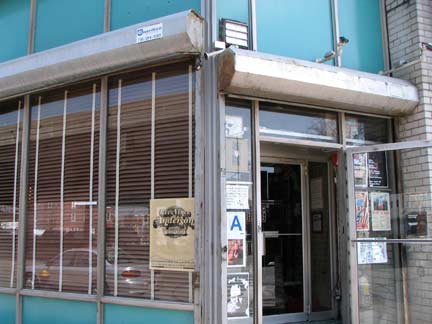
One of Williamsburg’s trends over the past decade has been adaptive reuse. Union Pool is a concert venue/restaurant at the SE corner of Union and Meeker that developed in a nondescript vinyl-sided office space.
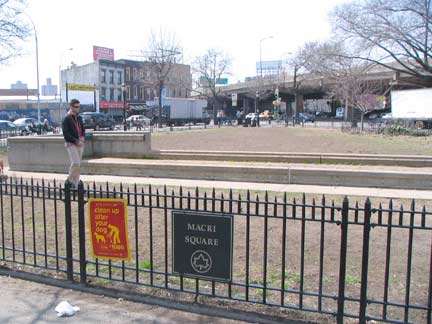
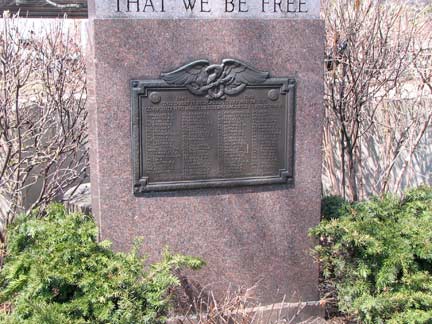
Macri Square, a triangle between Union, Meeker and Metropolitan Avenues, contains Williamsburg’s World War II memorial. Other than McCarren Park, it’s Williamsburg’s other substantial park space.
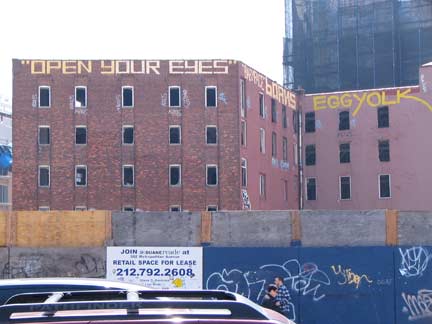
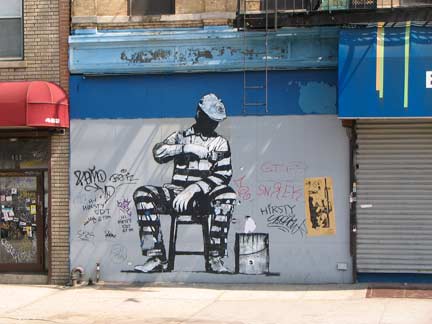
The corner of Metropolitan and Union Avenues is replete with graffiti script on abandoned spaces and street art on the side of a Mexican restaurant.
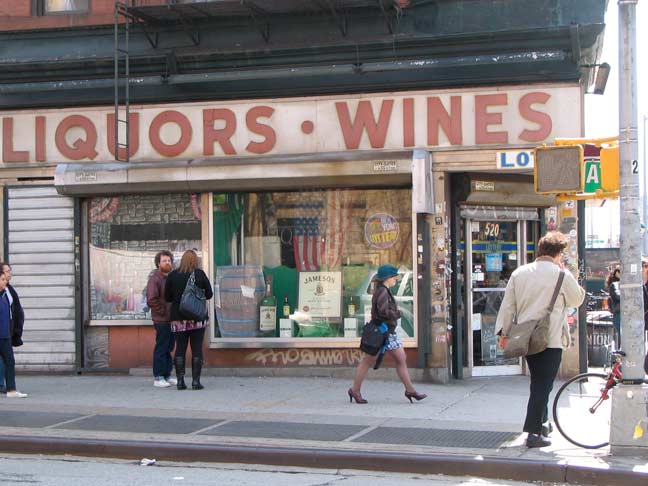

The SE corner of Union and Metropolitan Avenues has likely looked the same for decades, as NYC’s liquor stores tend to retain the same signage, neon or vinyl, for decade after decade. This store doesn’t even need a name, it’s the local liquor store, customers have flocked in for year after year, and there’s no need to change anything.
However: the word ‘liquor’ does contain a “q” and while this sign has a fairly straightforward rendering, an O with a diagonal line through it, “q” can be rendered many ways in Roman script and it is on NYC’s many liquor store signs.

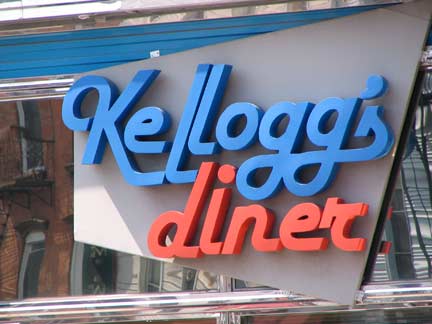
Kellogg’s Diner, at the SW corner of Union and Met Ave, was completely rebuilt and remodeled by the DeRaffelle diner company in 2008. Bucking the trend in NYC diners in recent years, it has not changed its menu to esoteric, expensive fare, retaining a regular diner menu of sandwiches, soup and hamburgers. With the closing of classic diners over town or their conversion into high concept foodie joints, that’s a big recommendation.
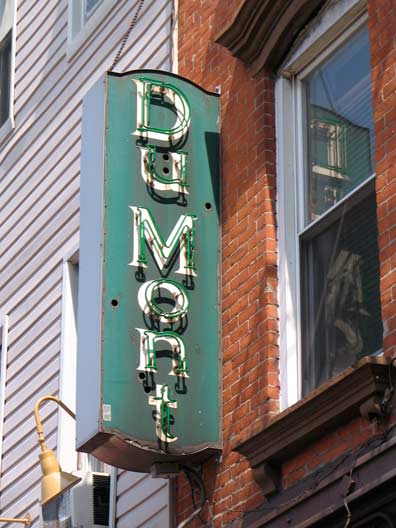
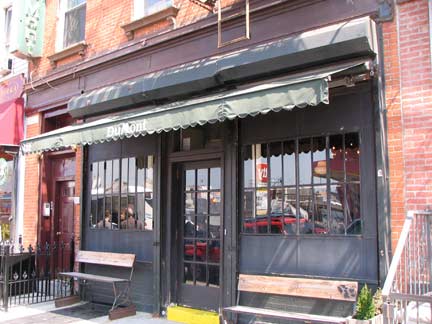
Between Met Avenue and Devoe Street is the DuMont Restaurant in what I believe is a former storefront occupied by DuMont television repair. DuMont actually began as a rival televsion network to NBC in 1946 as an adjunct to DuMont Laboratories, a television set manufacturer. Always financially strapped, it ceased operations in 1956, but not before showing original programming still remembered today such as the Jackie Gleason Show, Ted Mack’s Amateur Hour and Captain Video.
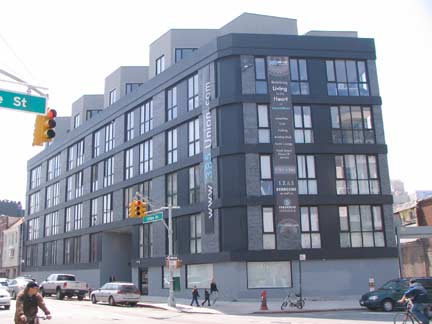
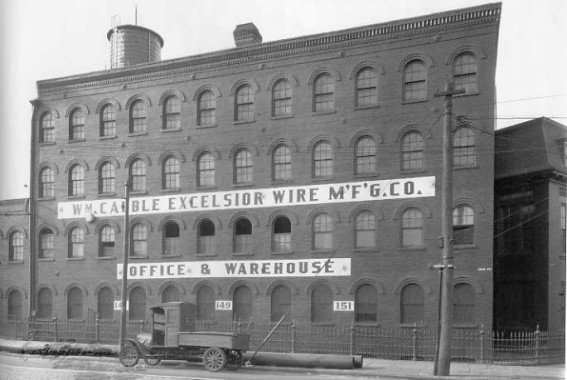
South of Metropolitan Avenue, some massive condominium projects have been bruited in, replacing factories and garages that formerly were scattered along the avenue. 385 Union, at Ainslie (above left) stands in place of the former William Cabble Excelsior Wire Manufacturing Company (147-151 Union, 1930 photo). When Union Avenue was extended south in the 1930s, the house numbers were changed. photo: Brooklyn’s Williamsburg(h), City Within a City, Brian Merlis

Directly across the street at the NW corner, meanwhile, is the new, similarly gray 65 Ainslie. Both buildings were designed by architect Karl Fischer.
At the NE corner of Union Avenue and Powers Street, meanwhile, 380 Union Avenue (Kutnicki Bernstein, architects) has replaced what was formerly the Union Garage.
Buildings at Hope Street and Union Avenue, however, are relatively untouched since at least the 1930s. I found this vintage 1941 Plymouth Special Deluxe outside an auto repair shop.

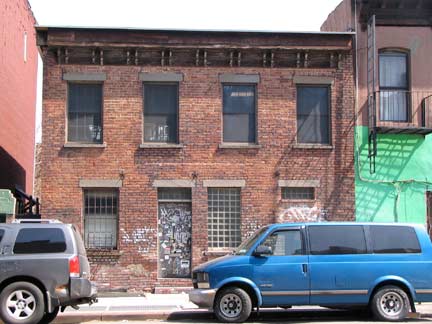
Union Avenue looking south toward Borinquen Place and an ancient survivor south of Powers Street.
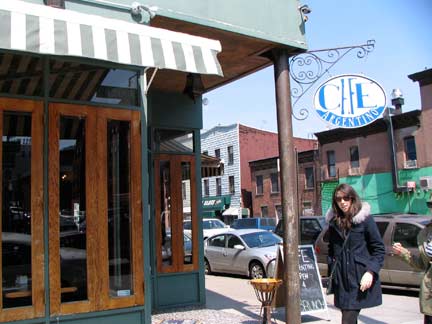
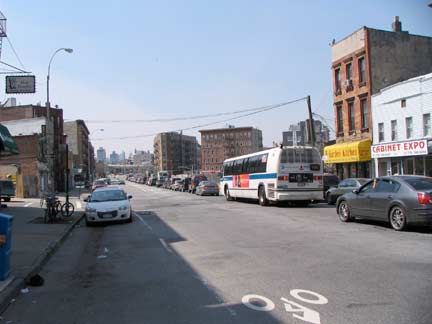
Borinquen Place cuts across the NW-SE oriented street grid west of the junction of Union Avenue and Grand Street, funneling traffic to the Brooklyn-Queens Expressway. Borinquen, another name for the island of Puerto Rico, was until the 1980s the Grand Street Extension. The history of the road is a bit fuzzy — I had thought it was constructed when the BQE was, but walking down Borinquen Place reveals a number of older buildings predating the BQE.
Looking at older maps, it was at least mapped between 1896 and 1915 between Grand and Union and Havemeyer Street, meaning it was likely built as a connector to the Williamsburg Bridge, which went up in 1903 (in similar circumstances, the Flatbush Avenue Extension opened in 1909 when the Manhattan Bridge did). Beginning at Union Avenue, Grand Street becomes a busy roadway, becoming Grand Avenue and ultimately Queens’ Broadway in Maspeth/Elmhurst.
Cafe Argentino is on the SW corner of Borinquen and Union.
[click on photos in above Gallery for full-size images]

The above two photos come from the endpaper of Brian Merlis’ Brooklyn’s Williamsburg(h): City Within a City, showing Union and Ten Eyck Streets in 1930. The apartment building and storefronts are still there. The posters advertised Pointed Heels and The Kibitzer at the Fox Commodore (then at 329 Broadway, demolished 2007) and Dynamite (C. B. DeMille’s first talkie), Belle Baker in Song of Love with Eve Arden, and Night Ride with Edward G. Robinson at the Fox Alba (then at 750 Flushing Avenue at Broadway, now replaced by Woodhull Hospital)
Lithuania Square is a triangle formed by Union Avenue and Stagg and Hewes Street.
[T]his triangular patch of land is dedicated to the memory of two Lithuanian-Americans, Steponas “Stephen” Darius (1896-1933) and Stasys “Stanley” Girenas (1894-1933), who attempted to fly nonstop from New York to Lithuania in 1933. The two men immigrated to the United States as children in the early 1900s. In 1932, they pooled their resources and purchased an airplane, a Bellanca CH-300 Pacemaker, in the hopes of completing a transatlantic flight. In the early 1930s, the Pacemaker was the most popular aircraft model for long distance flights. After Charles Lindbergh’s first-ever non-stop flight across the Atlantic Ocean in 1927, the world was fascinated with what was called “Atlantic fever.” Between 1919 and 1932, 84 pilots attempted flights across the Atlantic and 26 perished in the attempt. Darius and Girenas sought to draw international attention to their homeland by flying nonstop from the New York to Kaunas, Lithuania…
In the early morning of July 15, 1933, the two men Darius, 37, and Girenas, 39 — began their journey from Floyd Bennett Field in Brooklyn. Unfortunately, their transatlantic adventure met with disaster. Thirty-seven hours and eleven minutes after leaving Brooklyn, and less than three hours from their destination of Kaunas, Lithuania, the Lituanica plunged into a forest near Soldin, Germany. Darius and Girenas were killed instantly. NYC Parks
The square was given its name in honor of the two pilots in 1935.
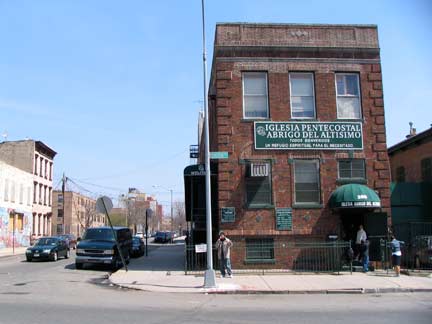
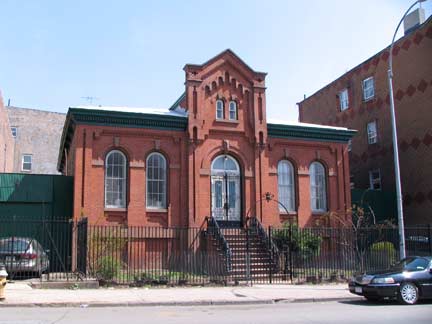
Two buildings between Stagg and Scholes on the east side of Union. On a Saturday afternoon, there was a guy proselytizing with a bullhorn outside the church — like a muezzin, you could hear him from 5 blocks away. The rather mysterious building at right is the former PS 69 and “Colored School No. 3”. It was completed in 1881 and landmarked in 1998.
Colored School No. 3 as an institution evolved from the town of Williamsburgh’s original African Free School, which had been founded prior to 1841. The school was taken over by the Board of Education of the City of Brooklyn in 1855, when it was given the name “Colored School No. 3.” It was renamed P.S. 69 in 1887, and was later absorbed by the school system of the City of New York after the consolidation of 1898. The Board of Education relinquished control of the building in 1934. — NYC Landmarks Preservation Commission
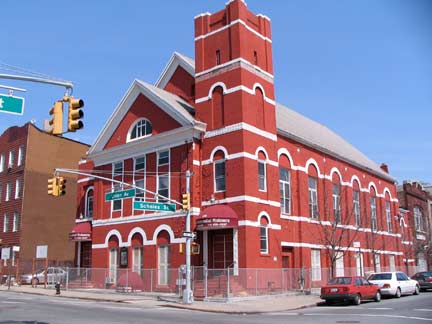
At the corner of Union and Scholes is what was originally the St. Peter German Evangelical Reformed Church, now Pentacostal Misionera. The church was organized in 1853 at Union and South 3rd; this is the second church on this site.
At Union just north of its intersection with Broadway is a short stub of Johnson Avenue, complete with ancient trolley tracks. This short stub has been demapped, possibly accounting for the continued presence of the tracks, which served the old #14 trolley route, which used Johnson, Morgan and Wilson Avenues. he ancient vent on the east side of Union Avenue completes the gallery.
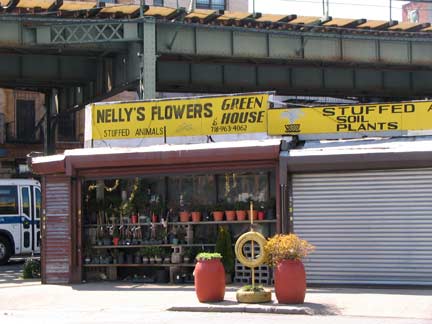
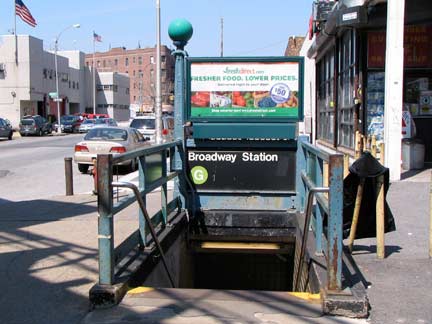
Nelly’s, at Broadway and Union, gives the appearance of having been a fixture for several decades. The IND Crosstown does not transfer to the Broadway el, mainly because it is midway between the el’s Hewes and Lorimer Street stops.
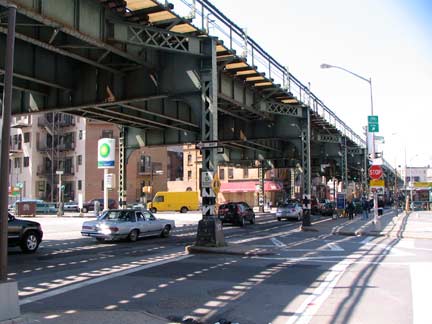

Brooklyn’s Broadway el is among the system’s oldest — this section dates back to 1888. The line is linked to the Nassau Street line (J) in Manhattan, and crosses the Williamsburg Bridge and runs along Broadway, Fulton Street, Crescent Street and originally, out to Jamaica Avenue and 168th Street. The eastern section of the line was razed in 1978 and a new terminal at Parsons-Archer was opened ten years later.
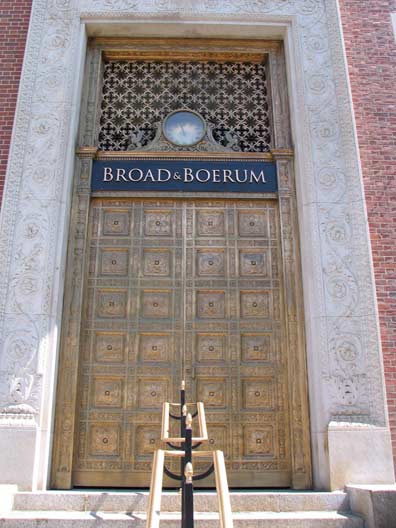

The now-defunct Lincoln Savings Bank was incorporated in 1866, the year after the President’s assassination. This was the main building, at Broadway and Boerum Streets, now home to the Broad & Boerum jewelry emporium.
ForgottenFan John Simonetti: The building at Broadway & Boerum was the MAIN BRANCH of the Lincoln Savings Bank. I actually worked for the bank (my first job after getting out of college) in that building from 1967-1972. It was my first job in Information Technology (then known as Data Processing) in the computer room on the second floor.
The first floor was the actual bank itself with the teller windows and desks for customer service etc. On that first floor was the biggest, heaviest, thickest vault door I had ever seen. It operated, like most banks, on a time lock that released around 8 AM and was secured at 4PM. In those days, banking was strictly a 9AM-3PM business, without exceptions. I would guess, if the vault is still there, that is it currently used to hold the jewelry the business sells.
Adjacent to the vault, was the Office Of The President, which held a secret few people who worked there knew. In the office, directly behind the President’s desk, was what looked like a closet/washroom. However, if you actually walked into the closet and turned right, there was a narrow, small, tight corridor that led to both a second ‘secret’ entrance to the vault, and also to a spiral staircase up to the second floor, where most of the offices were. Rumor had it that if the President did not want to see someone, he could surreptitiously go up to the second floor, and leave the building by another exit. This secret was revealed to me by one of the security guards.
Additionally, since this bank was formerly the German-American Savings Bank, American sentiment before, during, and after WWII might have generated the need for this ‘escape hatch’.
The third floor, which in your picture is the small boxy structure on the top of the building housed two dining rooms: a larger one where employees (including me) received a FREE LUNCH which was subsidized by the bank. This was a perk that is unheard of in today’s world. The second, smaller dining room was the ‘officer’s dining room’, and was for the exclusive use of bank officials and important visitors. While the employee’s dining room was basic and stark, the officer’s dining room had linen table cloths and silver services stacked on dark wood sideboards.
The building had its own parking lot which faced Broadway; not sure if the lot is still there. If you worked nights, which I did for a while, you had a key to a lock and chain for the lot, which was necessary at that time.
…The ‘free lunch’ was not a buffet type lunch. It was a HOT MEAL that was actually served to employees by women who wore all-white uniforms (like nurses). You were assigned a seat at a table, and that was your seat for as long as you worked there. The serving ladies were employees of the bank, too. While daily ‘tipping’ did NOT take place, it was customary to give the ladies (my server was named KATIE — God, I can’t believe I just remembered that!) a Christmas card with a gift/gratuity included for the year. As I said, this type of perk does not happen anywhere in the workplace any more. It is a memory I am very fond of.
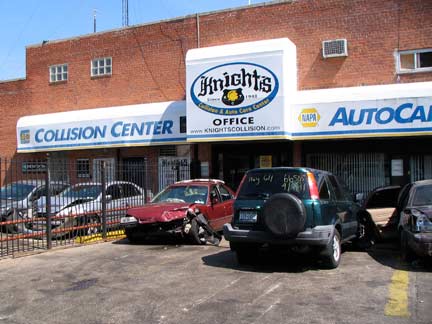

South of Broadway is actually the “new” section of Union Avenue, as it was constructed in the 1930s atop the cut for the IND Crosstown subway. It’s also the more nondescript, uglier section of Union Avenue, with plenty of auto repair joints and collision repair places.
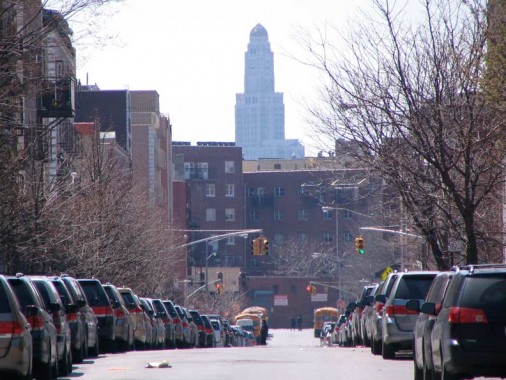
One Hanson Place, the condo tower also known as the Williamsburg Bank Tower on Hanson and Ashland Places in downtown Brooklyn (and also the House of Pain, for its plethora of oral surgeons) pokes its nose above Middleton Street, as seen from Union Avenue. It was Brooklyn’s tallest building for many years, having been dethroned by the Brooklyner Tower in 2009. The Brooklyner is a full two feet taller.

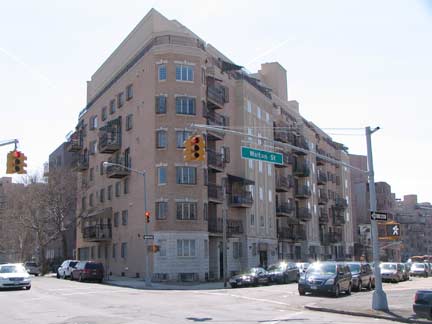
Some of the ugliest residential architecture ever dreamed of outside the Soviet Union has found a foothold in southern Williamsburg just north and south of Flushing Avenue, and the southern leg of Union Avenue has gotten its share at Lorimer Street and Walton Street.
Some more of these multifamily residential units for your viewing pleasure on Marcy Avenue (left) and Wallabout Street at their Union Avenue intersections.
At Union Avenue and Wallabout Street is a long-shuttered entrance/exit to the IND Crosstown. Its ancient light fixtures are still in place, but not the sign. When ForgottenFan Mike Epstein happened by early in the 2000s, it did retain a scrap of signage.
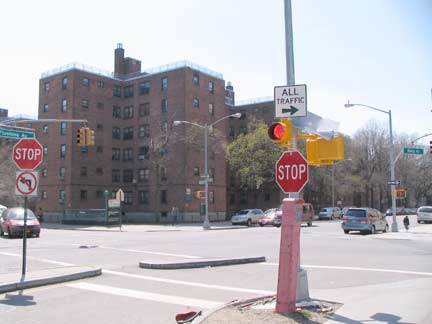

Leaving you with detritus from two different decades: Marcy Houses at Flushing, Marcy and Union Avenues, and whatever these objects are called, at the NW corner of Flushing and Marcy.
Photographed April 10, 2011; page completed April 17

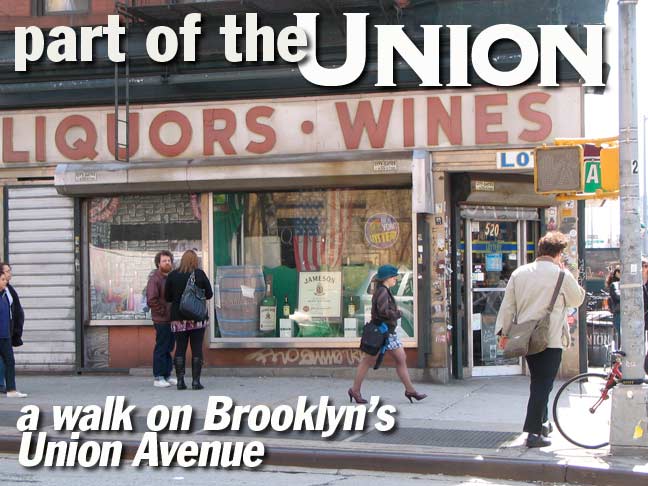
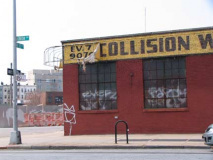
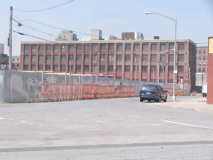

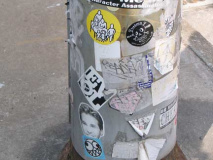
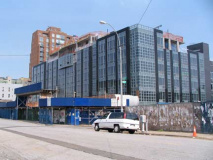
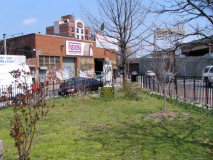
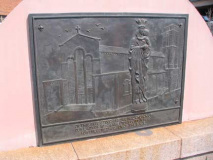
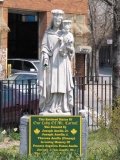
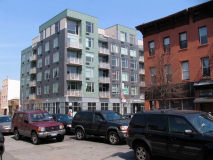
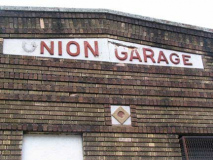
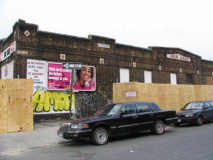
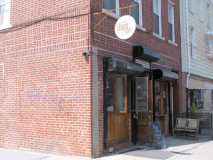
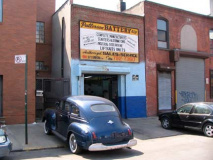
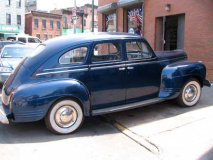
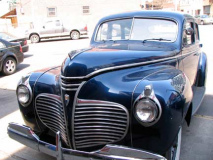
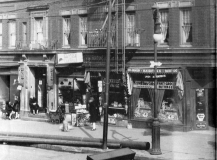
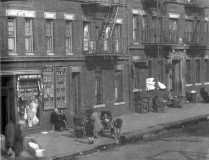
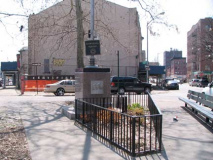
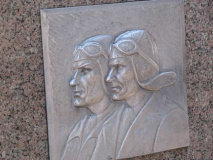
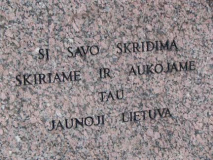
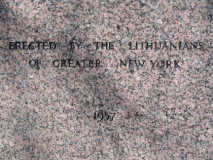
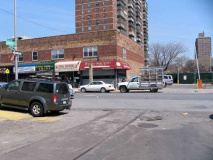
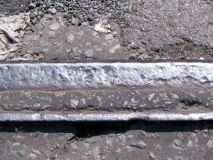
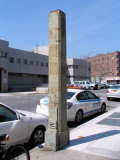
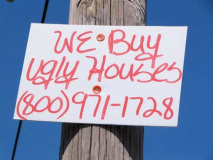
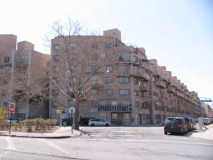
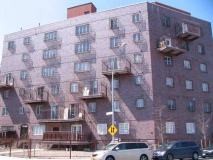
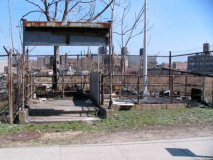
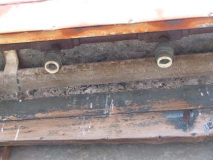
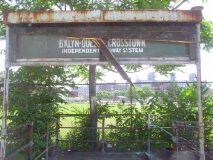
19 comments
Referencing the 1930 B&W photo of the Wm. Cabble Excelsior Wire Mfg Co. at 385 Union Ave, taken from Brian Merlis’ book, “City within a City”, that you show on your “UNION AVE, Williamsburg, Greenpoint” display:
Question 1. Do you know if the original photo is actually larger, or, shows more of the building?
Question 2: Do you know if Brian Merlis has more photo’s of the same building ( s ) , or do you know where he got the photo from?
YOU DID AGREAY JOB. I LIKED THE LITHUANIAN SQUARE FOR THE LITHUANIAN PILOTS DIRENAS @ GIRENAS ,WHAT A WONDERFUL WAY TO REMEMBER GREAT MEN THAT CAME FROM BROOKLYN . THANK YOU AGAIN.
To whom it may concern
My grandmother Filomena (Margaret) Frolio was born on December 27th 1898. Her family lived on 316 Union Ave Brooklyn, NY Kings county.. I am trying to track down her birth certificate and I am wondering where I could go in the area to find it Her father was Vincenzo (James ) Frolio.. I would appreciate any Information that you can give me .. Thanks Lorrie
Did you ever get a reply? I am trying to obtain my grandfather’s birth certificate. His name was Frederick Lippiello and he lived at 29 Meeker Ave., Brooklyn. He was born Oct 30 or 31 in either 1893 or 1894. I would also appreciate any info that you can provide… Thank you – Marijane
The church on the corner of Union Avenue and Scholes St was an orthodox synagogue at one time. My grandparents worshipped there in the 1940’s and 50’s. When the congregation dwindled the synagogue was sold and became a Pentacostal Church.
Very nice pictures of the area, just a few additions to the captions – In the one of the Church at Union & Scholes looking up the block behind the Church is 11 Scholes St the bldg w/the arched second floor window which until 1971 was the Firehouse of Engine 216 which in 1971 moved to 187 Union Ave at Broadway (Johnson Ave) the old bldg is still there & privately owned – In the photo of Broadway & Johnson across from the old vent on the left is the Firehouse at 187 Union Ave housing Ladder 108 & the Chief of the 35 Battalion which moved there from 112 Siegel St bet Humboldt & Graham in 1971 along w/Engine 216 from 11 Scholes St when it was built in 1971,the left half of the bldg is the FDNY & the right half is the NYPD 90 Precint & around the corner on New Montrose Ave is NYPD Emergency Service Squad 8…..the whole bldg which is not interconnected is bordered by Johnson Ave , Union Ave , New Montrose Ave & Broadway, before the bldg was built the site was a used car lot.
My father owned a paint store at 379 Union avenue called “Pecart’s”. He was a sign painter. He also did gold leaf for signs, pawn shops and more. His main business was the old billboard signs that were configured like wallpaper and put on huge billboards all over. One of his signs, I remember, was the RONZONI sign on the company’s factory in Queens. He painted it by hand. He had cerebral palsy which rendered his left arm useless, yet, he was able to maneuver himself on scaffolding situated on whatever building he was working on. Go figure. He doesn’t appear anywhere in Williamsburg’s history. I have searched all over. We also did a lot of work for our parish at Our Lady of Mount Carmel on Havemeyer street. We painted and carried the Giglio !
My parents lived in the apartment building on Union Ave & Ten Eyck Street, 306 Union Avenue. it is pictured above. They lived there from 1945 until 1960. The stores underneath the apartment buidling housed a grocery store, a candy store, and a barber. There was a fire in the late ’70s that gutted the building. Just the shell was left. It has obviously been rebuilt.
I LIVED AT 306 UNION AVE FROM 1951-1962. WOULD I KNOW YOU?
MY NAME IS BRUCE MIRAGLIA.
MY FATHER’S NAME WAS HENRY AND MY MOMS NAME WAS MITZI?
I think we lived on the same floor. My parents name was Bernstein. We moved in 1960.
DEAR BARBARA,, I PROBABLY KNEW THEM, OR THEY WERE FRIEND, WITH MY PARENTS. AS I WAS BORN IN 1951, AND LIVED THERE[ 306], UNTIL APPROX.1971. THE KLAUSES. GOOD FRIENDS, THE MIRAGIAS, LIVED ON FIRST FLOOR. WE LIVED IN APT. 27, VERY TOP CORNER. THE GROCERY WAS WALENSKIS, THE CANDY STORE, REDS, …HIMEY, IF YOU KNEW HIIM BETTER. THE SHOE MAKER, BENNY! FIRST STORE, TO THE RIGHT OF THE ENTRANCE. THE MOST KIND , CARING MAN, I EVER MET. THE BARBER SHOP WAS A LATER ADDITION, JIMMY THE BARBER MOVED THERE FROM SOUTH FIRST, ALONG WITH MY FRIENDS FATHER, DIFILLIPPO. UNFORTUNATELY, THE NEIGHBOR HOOD, WENT INTO MAJOR DECLINE TOWARD THE END OF THAT DECADE. HEROIN WAS RAMPANT, AND I LEARNED TO FIGHT, EARLY ON IN LIFE. WENT TO PS 18, JHS 49, BROOKLYN TECH, THEN EASTERN DISTRICT H.S.. WALKEED MANY A MORNING, FOR THE FREE TIME AT MCCARON POOL. [10-1] A DIME AFTER ONE. OR BROUGHT MY MANDATORY BAR OF SOAP[ NEEDE FOR ADMISSION] TO METROPOLITAN POOL, ON METROPOLITAN AVE. FLEW MANY A KITE OFF THAT ROOF!!!!!!! SO MUCH MORE…….. A LOVE / HATE RELATIONSHIP. FEEL FREE TO COMMENT, OR LEAVE MESSAGE. LOVE DENNIS KLAUS
Your name is familiar. I was 10 when we moved. I remember Red’s candy store. The best egg creams!
I know you. We are first cousins. I am Irene. My father was your uncle Joseph. My mother was Nancy.
This is too weird. How are you? Where are you?
Please reply.
Irene
I know you, Bruce.. We are first cousins. I am Irene. My father was your uncle Joseph. My mother was Nancy.
This is too weird. How are you? Where are you?
Please reply.
Irene
Now he atleast will have a footnote, which is more than most will receive. If you happen to come across any old photos or designs of the signage and such he painted back in forgotten BK, it would be cool to see.
What a nice walk down a real memory lane. I was Bar Mitzvah in that shul in 1955. I lived at 403 Hewes Street on the other side of Union Ave (across from the Lithuanian Sq) but my best friends, Sheldon Geffner lived on Union and Dave Wittenberg on Meserole St. My schools were PS 19 and JHS 50; Then Stuyvesant HS and Brooklyn College.; I left NYC in 1964 for good and now retired in South Carolina.I’m reading a book on the Civil War and became curious about the origin of Union Avenue. Found y’all instead.
Elliot, is your last name Siegel? If it is, our parents were friends.
Yes, Barbara, it is Elliot Siegel. Who were your parents and where did they live? Did we go to school together? How weird to be texting when the response time is measured in months! You can email me privately oat 4esiegel@gmail.com
Hi Barbara, so now I scrolled back to your earlier posts and see that you were 10 years years old in 1960. I was 18 and we moved to Crown Heights the same year. I don’t remember your parents, unfortunately. But you remember me. How nice! I do remember the candy store your neighbors (Dennis and Bruce) commented on. That’s where I bought my comic books. The building had a huge Breyer)s ice cream sign painted on the side. Clearly visible from our third floor apartment across the street.